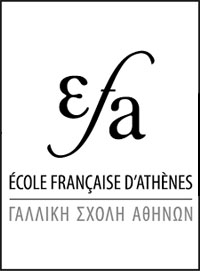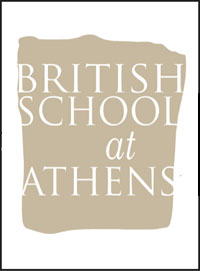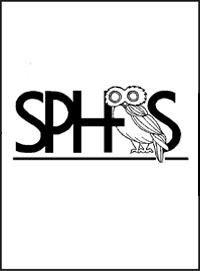SALAMIS Kanakia - 2008
Informations Générales
Numéro de la notice
736
Année de l'opération
2008
Chronologie
Mots-clés
Maison - Figurine - Outillage/armement - Pierre - Habitat - Nécropole - Production/extraction - Sanctuaire
Nature de l'opération
Institution(s)
Toponyme
Notices et opérations liées
Description
Salamis Kanakia. Y. Lolos (Ioannina) reports on the 2008 season of excavation which focused on the Myc élite residence on the acropolis and the neighbouring Myc cemetery.
On the acropolis, building Γ, the central residence (of which 45 rooms and spaces have so far been revealed, covering an area of at least 750m2), was further investigated. Excavation of one room of the N wing was completed: this was attached to the so called ‘One-roomed House’ (A2). N of the N entrance to the building, a reception or waiting area was revealed. This was probably roofed from the beginning, and was set at a lower level than the rooms to the S of it: the main approach was through a wide entrance way on the W side with a built threshold. On the W side of this area, stone steps (oriented N-S, 2.75m w.) led down into the interior of the building. A stone bench (2.5m l., 0.55m average d. and 0.4m h.), along the S wall, could seat 6 people. An undecorated terracotta bath-tub (1.5m l., 0.6m w. at centre and 0.5m h.) was set into the floor almost touching the N wall. The area produced a large quantity of LHIIIB-LHIIIC E pottery, 2 tripod chytres, 50 stone tools and small objects, and fragments of a terracotta figurine.
On the acropolis, building Γ, the central residence (of which 45 rooms and spaces have so far been revealed, covering an area of at least 750m2), was further investigated. Excavation of one room of the N wing was completed: this was attached to the so called ‘One-roomed House’ (A2). N of the N entrance to the building, a reception or waiting area was revealed. This was probably roofed from the beginning, and was set at a lower level than the rooms to the S of it: the main approach was through a wide entrance way on the W side with a built threshold. On the W side of this area, stone steps (oriented N-S, 2.75m w.) led down into the interior of the building. A stone bench (2.5m l., 0.55m average d. and 0.4m h.), along the S wall, could seat 6 people. An undecorated terracotta bath-tub (1.5m l., 0.6m w. at centre and 0.5m h.) was set into the floor almost touching the N wall. The area produced a large quantity of LHIIIB-LHIIIC E pottery, 2 tripod chytres, 50 stone tools and small objects, and fragments of a terracotta figurine.
In the cemetery, an oval tumulus (20m x 25m, over 2m h.) was discovered, set on bedrock within a stone kerb on the WSW side, and with a peribolos wall of large, unworked stones set around and at some distance from it. The tumulus did not contain burials. It was likely marked by a stele, given the discovery of an approximately rectangular, roughly worked, thick stone slab, now set aside on its E side. A few Myc sherds were included in the tumulus fill; a clear Myc stratum discerned a few metres from the W side provides good relative dating evidence for the construction. Two large openings cut into the bedrock in antiquity, both empty of finds, are open to various interpretations (as remains of tomb robbing, unfinished graves, looted cenotaphs or bothroi for cult offerings). A LCl-Hel temenos is located close by. The likely ritual function of the tumulus is reinforced by the presence a few metres from its W side of a paved, approximately round exedra. LMyc pottery was found on its surface, along with 2 fragments of terracotta figurines and a few animal bones. The pottery shapes are mostly open (kylikes, skyphoi and chytres) and are similar to those in use in the last phase of activity in the residence.
Finally, surface survey was undertaken of a limited part of the area surrounding Kanakia. An anc. (possibly Hel) round well (di. 1.2-1.3m), cut into the limestone bedrock, was recorded on the site of the mod. coastal well, directly below the W side of the Myc acropolis. The quarry for the grey limestone used for the Myc residence was located close to the acropolis towards the SE (towards Pyrgiakoni), where today quarries are in use as refuse dumps. Other focuses of survey were the N boundary of the Myc cemetery; documentation of a later (Hel) peribolos on the SE side of the acropolis, ca. 50m l. and generally oriented E-W; and documentation and evaluation of features inside the LCl-Hel temenos noted above.
Finally, surface survey was undertaken of a limited part of the area surrounding Kanakia. An anc. (possibly Hel) round well (di. 1.2-1.3m), cut into the limestone bedrock, was recorded on the site of the mod. coastal well, directly below the W side of the Myc acropolis. The quarry for the grey limestone used for the Myc residence was located close to the acropolis towards the SE (towards Pyrgiakoni), where today quarries are in use as refuse dumps. Other focuses of survey were the N boundary of the Myc cemetery; documentation of a later (Hel) peribolos on the SE side of the acropolis, ca. 50m l. and generally oriented E-W; and documentation and evaluation of features inside the LCl-Hel temenos noted above.
Auteur de la notice
Catherine MORGAN
Références bibliographiques
Y. Lolos, Akamas 3 (2009), 2-8; further reported in Ta Nea and Ethnos 10/03/09
Date de création
2010-03-11 00:00:00
Dernière modification
2023-10-03 15:35:54








